Home »
Misc »
How to officiate a basketball game
How to officiate a basketball game
How To Referee Basketball
Home>Sports>Basketball>Basketball How Tos
PreviousNext
Being a basketball referee can be a fun activity in which someone can also make some extra money. There are many important things to consider when you referee a basketball game. To begin with, it is necessary to know all the rules of the game of basketball, and particular rules of games or leagues that one might be refereeing. Second, it is necessary to know when to apply the rules and how to enforce them, treating players, coaches, fans, and other officials with respect and fairness. Also, it is necessary to have the right equipment referees need to use. Let’s start by taking a look at the basics, what referees:
Table of Contents
- What are referees?
- What do referees do?
- How do officials call a foul or violation?
- How to Become a Referee
- Referee Equipment List
What are referees?
Referees are a type of official.![]() They control all aspects of the basketball game. There are six different types of officials.
They control all aspects of the basketball game. There are six different types of officials.
- The Crew Chief (x1)
- The Referees (x2)
- The Official Scorer (x1)
- The Trained Timers (x2)
Depending on the game, the number of officials involved in a basketball game can change, but regardless of how many people are working, they must act together to guarantee that the game goes along smoothly and fair.
What do referees do?
Basketball referees must know all the game’s rules and regulations because they are the ones responsible for enforcing them, keeping the final result fair. Referees must call fouls, check for violations, award scores, and keep the game under control. The team of officials must decide what each member will be responsible for doing during a game, or which area of the court they will center their attention on. Sometimes referees will need the assistance of other officials to decide on a call, and thus they may have to gather and talk about the play. All that is so that the fairest outcome is achieved, and to make sure the game is being played within the rules.
All that is so that the fairest outcome is achieved, and to make sure the game is being played within the rules.
Some of the violations called by referees include:
- Traveling / Walking
- Double Dribble
- Goaltending
- Carrying
- 3-second violation
- 5-second violation
- 10-second violation
- Technical Fouls
- Personal Fouls
How do officials call a foul or violation?
When an official spots a violation, his or her will blow a whistle to indicate that the action must be stopped. Naturally, everyone’s attention will turn to referee who blew the whistle, in this where another part of being a referee comes in; referees must signal what violation was committed and by who. To do that, referees do signals with their hands and arms, therefore, all referees must know the signs, their meaning, and when to do them.
Being a referee is not easy. It is impossible to please everyone or get every call right, so referees will often face confrontation from fans, players, coaches, and even parents. It is important for referees to not let missed calls or complaints influence on other calls throughout the game. If that happens, people start to question decisions more often, the referee loses credibility, and the game becomes chaos, because players and coaches of both sides will be talking too much to referee. To not let that happen, referees must make every call with confidence, and with a body language that shows that. Even if referees are not sure if a call they made was actually the right one, they gotta act as if they were 100% certain, not giving players and coaches room to complain more than necessary. However, that must be done while keeping composure and respecting everyone involved with the game. If the situation gets out of hand, referees can rely on technical fouls to control the nerves on the court.
It is important for referees to not let missed calls or complaints influence on other calls throughout the game. If that happens, people start to question decisions more often, the referee loses credibility, and the game becomes chaos, because players and coaches of both sides will be talking too much to referee. To not let that happen, referees must make every call with confidence, and with a body language that shows that. Even if referees are not sure if a call they made was actually the right one, they gotta act as if they were 100% certain, not giving players and coaches room to complain more than necessary. However, that must be done while keeping composure and respecting everyone involved with the game. If the situation gets out of hand, referees can rely on technical fouls to control the nerves on the court.
How to Become a Referee
Referees are required in basketball games of all levels, without them there is no organized basketball. Regardless of the level of basketball you want to referee (youth, college, NBA), you have to start from the bottom.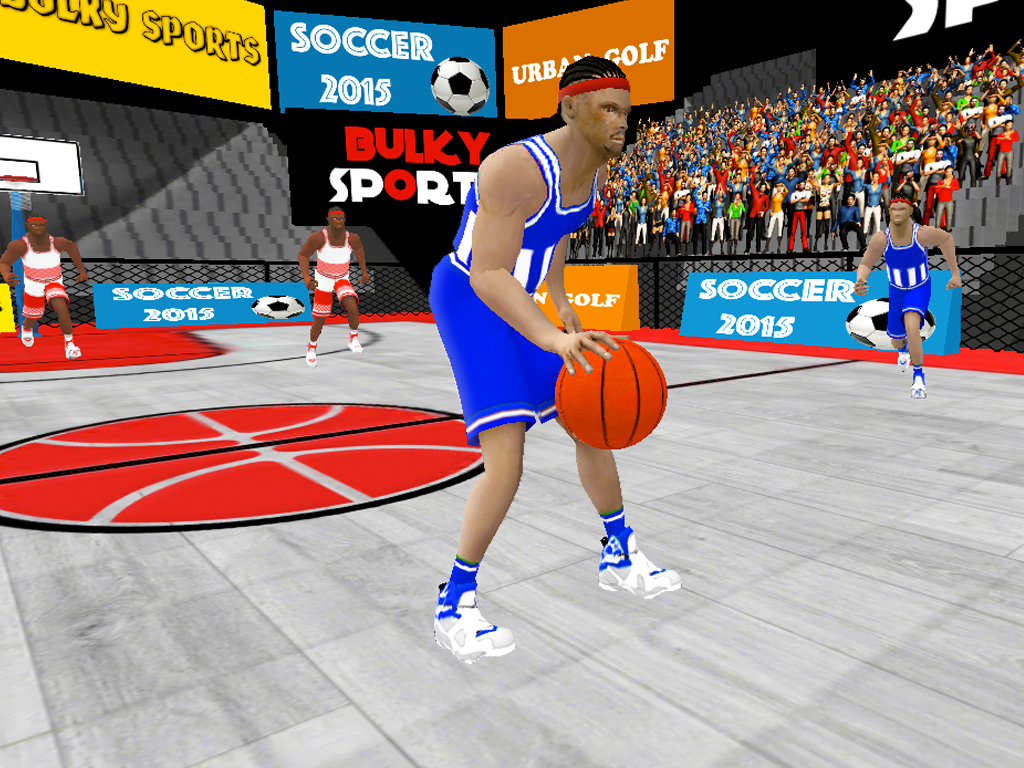 Many recreational centers require referees to youth games, and that is a good place to start. A good idea is also to become a member of the National Association of Sport Officials, they do trainings and can certainly help you become a better referee. Starting from the bottom, you can work your way until becoming a full-time referee for the NBA, or simply have some fun officiating local high school games.
Many recreational centers require referees to youth games, and that is a good place to start. A good idea is also to become a member of the National Association of Sport Officials, they do trainings and can certainly help you become a better referee. Starting from the bottom, you can work your way until becoming a full-time referee for the NBA, or simply have some fun officiating local high school games.
Referee Equipment List
There are quite a few pieces of equipment that basketball referees must have in order to do their job. Take a look at them here:
- Black athletic shoes
- Black athletic socks
- Black beltless slacks
- Striped black and white shirt
- Good, loud whistle
PRO TIP: When purchasing your equipment, remember that you are going to be running and sweating while working, so buy comfortable and light clothes.
PreviousNext
Pages Related to How To Referee Basketball
- How To Play Basketball Free Throw Golf
- How To Play Basketball Pickup Games
- How To Play Basketball Outside
- American Basketball Association
- How To Shoot With Power
- Basketball Leagues
PreviousNext
Basketball Officiating Information - National Association of Sports Officials
Home
Resources
Become an Official
Basketball Officiating Basketball Officiating Information
Expect great physical demands.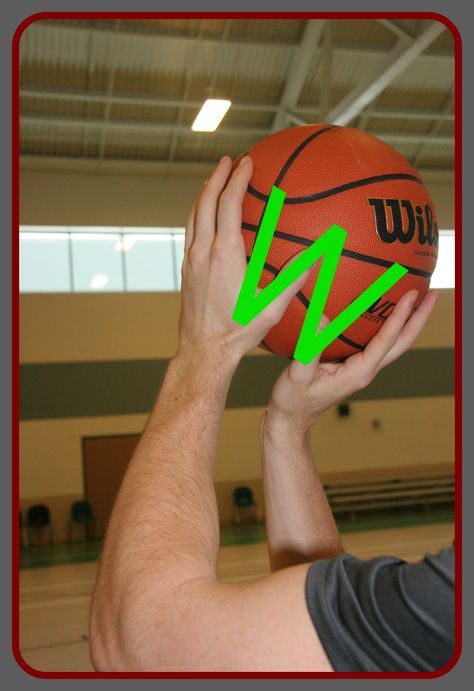 As the players’ ages increase and the competitive levels increase, the physical demands will rise. You will be required to run short distances many times. You will be constantly moving and on your feet.
As the players’ ages increase and the competitive levels increase, the physical demands will rise. You will be required to run short distances many times. You will be constantly moving and on your feet.
Training
Expect lectures, demonstration and exercises on the basic rules at local association meetings.
Equipment
- Polished, black, athletic shoes.
- Black socks.
- Black beltless slacks.
- A striped V-neck shirt no collar.
- A whistle and a lanyard.
- Estimated cost: $200.
Registration and Fees
Talk with officials at a game, contact the athletic department of a local high school or contact your local recreation department. They will be able to give you the name of the state governing body for high school athletics. You will be expected to complete a registration form for affiliation with a national, statewide or local association. Often there will be a fee that must be paid with that registration which goes toward additional officiating training and insurance.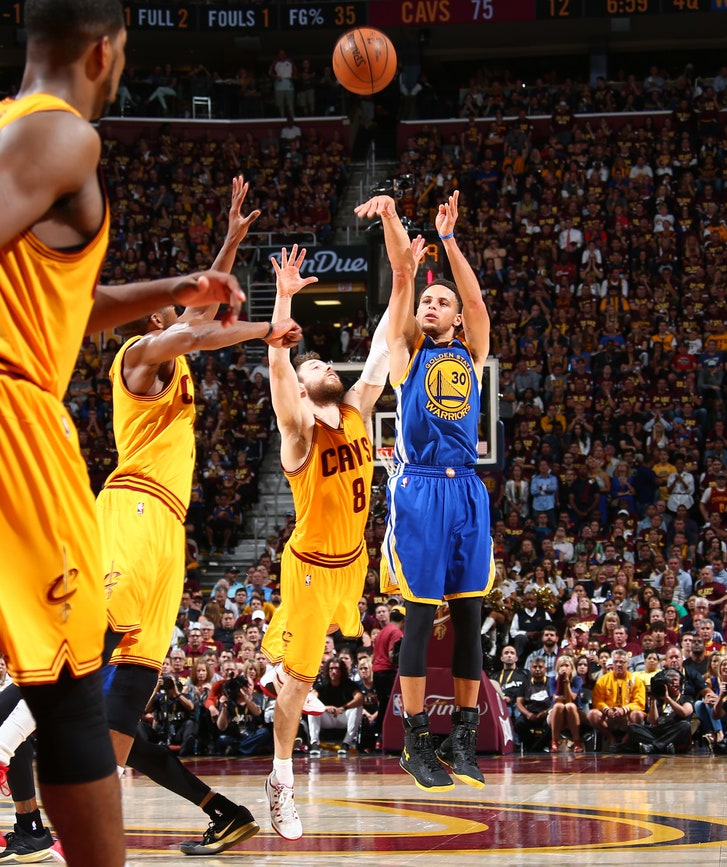 Often, with your state association fee, you will be provided rulebooks and other materials. The fees range from $10-$75.
Often, with your state association fee, you will be provided rulebooks and other materials. The fees range from $10-$75.
Game Fees
Game fees vary widely based on the players’ age group, competitive level and the state you officiate in. You can expect the range of $10 for youth games to $50 for competitive high school varsity games.
Help and Assistance
Ask a respected veteran official to be your mentor. That mentor will help answer your questions and provide crucial support. Don’t be afraid to ask questions about situations and rules. The more you talk about officiating, the more you will learn about it.
Certification
Here’s the path for starting and continuing your officiating career:
Youth Officiating
Many officials start at the youth level. Contact your local recreation department leaders. Your local association should also help you make contacts to get games.
High School Officiating
After working some games, you may feel you have the skills and confidence to work higher level competition. Contact your state association for registration information.
Contact your state association for registration information.
The National Federation of State High School Associations (NFHS) is the nation’s governing body for high school athletics. Contact the NFHS for rulebooks, rule changes and information on your state association.
NFHS
PO Box 690
Indianapolis, IN 46204
317-972-6900
In most cases, state associations can put you in contact with a local officials association. NASO has more than 4,000 local officials associations in our database. Local officials associations assign games, many times offers mentoring programs and assist in training.
High school athletic directors, association assigners and other officials will help you get games. Attend local officiating camps and clinics. They are focused on helping umpires learn and improve.
Annual Recertification
The different organizations have different requirements, but most require at least attendance at a meeting to go over any current rule changes. Additional requirements may be a written test with a minimum passing score, payment of fees for the upcoming season and association meeting attendance.
Additional requirements may be a written test with a minimum passing score, payment of fees for the upcoming season and association meeting attendance.
Still have questions? Contact us at HERE to receive additional information on becoming a basketball official.
Refereeing in basketball
Basketball
-
Historical development
-
Rules
-
Material support
-
Judging
-
Technique
-
Tactics
-
Education and training
-
Choosing a basketball
Basketball: judges on the court and the panel of judges.
Basketball matches are officiated by referees. The brigade consists of experienced judges with a clear knowledge of the rules of refereeing and having many years of experience. Judges are guided not only by the postulates of the prescribed rules. The referee is obliged to use common sense in assessing the situation, taking into account the mood and attitude towards the game by the teams.
It's not right to judge professionals and beginners the same way. Newcomers to the game often make many technical mistakes. Only fixing all such errors will greatly slow down the whole game. The fundamental principles in adjudicating rule violations are the basis for building a cohesive game.
The fundamental principles in adjudicating rule violations are the basis for building a cohesive game.
The referee must not pause the game unless clearly necessary. Any aggression and rudeness on the court should be stopped immediately, but a player should not be punished with a foul for unintentional contact, especially if it does not give any advantage in a particular game situation. The integrity and direct course of the game depends on the actions and skills of the referee.
The team of referees serving a professional basketball match must include:
Chief referee and site referees.
Two or three referees serve the game to fix errors on the court. They have quite broad powers. The chief referee makes significant decisions on the compliance of equipment, equipment, players' uniforms with the requirements of the rules. In case of serious violations, the Chief Referee may count the defeat. Referees start their duties 20 minutes before the start of the match. During the match, the referees clearly adhere to the rules. The decisions of colleagues are not questioned. The service of the game by the judges on the site is stopped by the sound of the siren.
During the match, the referees clearly adhere to the rules. The decisions of colleagues are not questioned. The service of the game by the judges on the site is stopped by the sound of the siren.
Secretary and his assistant.
The Secretary is responsible for the correct keeping of the score sheet. Through it, coaches submit applications for participation in the game, containing the data of the players. The maximum number of players per team cannot exceed 12 (5 main and 7 substitutes). Fixing the game score, interacting with the teams if a substitution or timeout is necessary, these are the main duties of the Secretary.
The scorer can only address the referee in a dead ball situation. Control over the number of fouls is also assigned to the Secretary. He brings this information to the judges and teams.
Timekeeper.
A basketball timekeeper must know the referees' gestures well and know the rules of the game. He is obliged to turn on and stop time on the scoreboard in a timely manner, guided by the gestures of the referees (whistle), as well as independently making a decision when putting the ball into play, declared a time-out, breaks, controversial or free throws.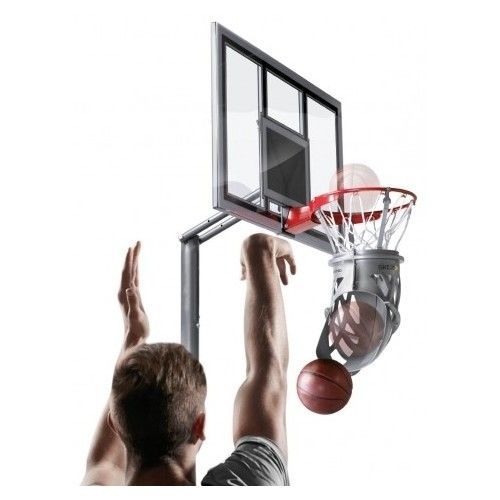 In the last quarter, 2 minutes before the end of playing time, the timekeeper stops the countdown after each effective throw.
In the last quarter, 2 minutes before the end of playing time, the timekeeper stops the countdown after each effective throw.
Shot clock operator.
The main function of the shot clock operator is to enforce the 24 second time rules. It turns on the timer every time the team gets possession of the ball and turns it off when the ball goes out of bounds. The timer is reset after a successfully completed attack or loss of ball control by the team. The timekeeper must reset the possession time to 14 seconds in a situation where a foul is committed on the team in possession of the ball or the ball is taken by the attacking team after an unsuccessful attempt to hit the ring. In this case, the ball must touch the ring itself, and the stopwatch must have any number less than fourteen seconds.
The basic gestures of a basketball referee can be divided into groups in order of importance to the player:
Official basketball referee gestures related to infractions
IMPORTANT! These violations result only in the loss of the ball, without any effect on personal and team fouls.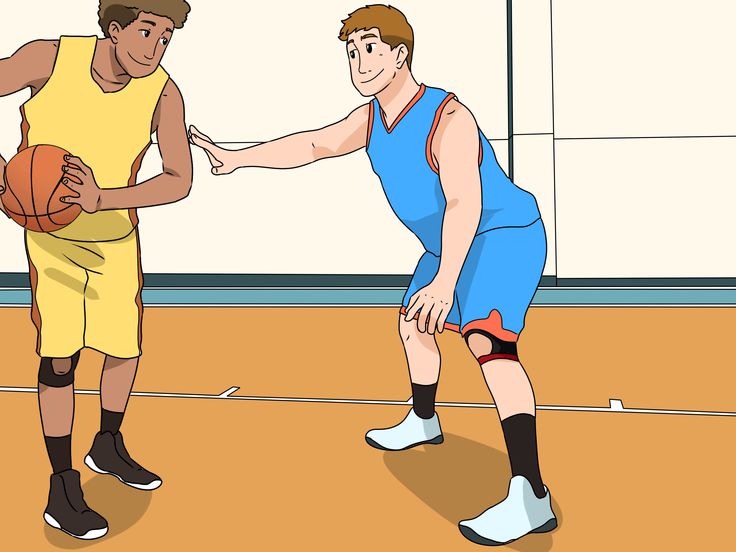
-
Fist rotation - jog
-
Movement of the palms of both hands up and down - double guidance
-
Half rotation of the palm - carrying the ball
-
Finger pointing at the foot - Intentional foot play
-
Front hand swing with two fingers - ball returned to the backcourt
-
Swinging from the bottom up with an outstretched hand with 3 fingers - 3 seconds
-
Show 5 fingers - 3 seconds
-
Show 8 fingers - 8 seconds
-
Finger touching shoulder - 24 seconds
Official basketball referee gestures related to types of fouls
Fouls are punished for an unauthorized action by a player in relation to another individually, as opposed to violations.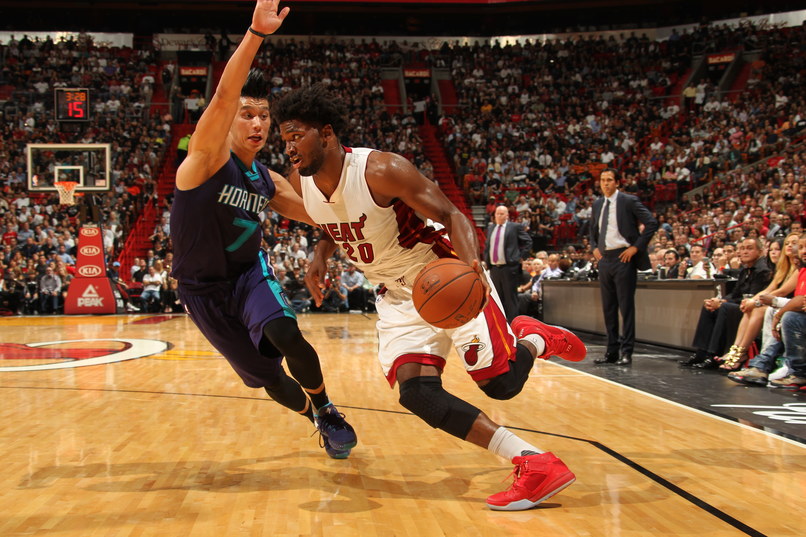
-
Wrist interception below - delay
-
Palm grip and forward movement - hold with hands
-
Both hands on hips - blocking (defensively) or improper screening (offensive)
-
Imitation of pushing - pushing or impinging a player without the ball
-
Wrist hit - misuse of hands
-
Punching to the open hand - Collision of the player with the ball
-
Striking with the hand on the other forearm - incorrect contact in the arm
-
Movement of the elbow to the side - excessive swinging of the elbow
-
The fingers of one hand are clenched into a fist, followed by an indication of the number of free throws - foul in the act of throwing
-
The fingers of one hand are clenched into a fist, followed by an indication of the floor - foul not in the process of throwing
-
Simulated head contact - blow to the head
-
Pointing the fist in the direction of the offending team's basket - foul to the team in control of the ball
Official Basketball Referee Signals, Substitutions and Time Out Signals
-
Crossed forearms in front of the chest - replacement for
-
Wave towards yourself with the palm of the outstretched hand - invitation to the playground
-
Palm and index finger form the letter T - timeout requested
-
Arms to the sides with clenched fists - media timeout
Official Basketball referee gestures, scoring gestures
-
Raised hand raise one finger, lower the hand down - 1 point
-
Raised hand raise two fingers, lower the hand down - 2 points
-
Raised hand with three fingers (attempted throw) or raised both hands with three fingers (successful throw) - 3 points
Official basketball referee gestures, informative gestures
-
Single bringing and spreading of the hands in front of the chest - cancellation of a hit or play action
-
Countdown with open hand movement - Visible Countdown
-
Thumb Up - Interaction
-
Wrist rotation over head with extended index finger - reset shot clock
-
Hand with index finger extended parallel to the touchline - Direction of throw-in and/or throw-in
-
Thumbs up of both hands followed by directions - V-ball or throw situation
Official basketball referee gestures, player numbering gestures
-
Right hand display of numbers from 1 to 5 - from #1 to #5
-
Showing the number 5 with the right hand, and with the left hand from 1 to 5 - from No.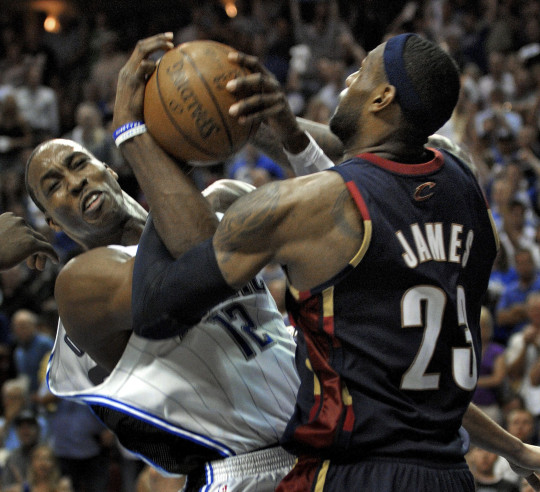 6 to No. 10
6 to No. 10
-
The right hand is clenched into a fist, the left hand shows the numbers from 1 to 5 - from #11 to #15
-
First, showing the number for tens with the outside of the brush, then with the palm of the hand the number 0 for units - 40
-
First, showing the numbers for tens with the outside of the brush, then with the palm of the hand, the numbers for units - 62
Official Basketball Referee Signals, Special Fouls
-
Movement with crossed arms with fists overhead - mutual foul
-
Palms form the letter T - technical foul
-
Interception of the wrist with a clenched fist at the top - unsportsmanlike foul
-
Both hands up with clenched fists - disqualifying foul
Official basketball referee gestures related to the game clock
-
Open palm up - stop watch
-
One fist above head - stop clock on foul
-
Hand down chopping motion - clock activation
Basketball
-
Historical development
-
Rules
-
Material support
-
Judging
-
Technique
-
Tactics
-
Education and training
-
Choosing a basketball
Rules of the game and rules of refereeing in basketball
Rules of the game and rules of refereeing in basketball
{
Completed by: Ekaterina Deryabina
Groups K01-20
How to play basketball
Two teams are required, each of which must have 12
human. 5 field players are considered, the rest, if necessary,
replace the main team (the number of substitutions is not limited).
A basketball match consists of 4 quarters. The exact time depends on the
basketball association hosting the meeting. For example, FIBA
spends every quarter for 10 minutes, and the NBA - for 12. This is the so-called
net time. Break between quarters - 2 minutes,
between two parts of the meeting - 15 minutes.
The ball may only be handled with the hands.
You can not run with the ball, just holding it in your hands,
hit the ball with your hand or foot, block with your body.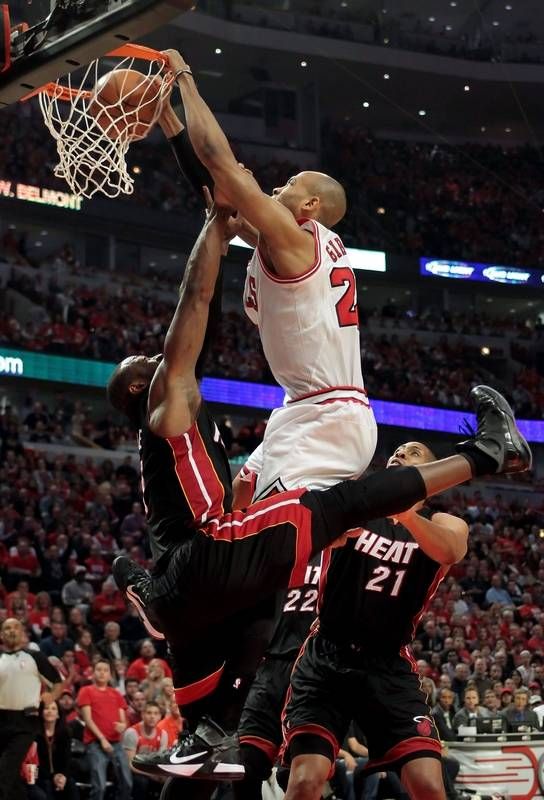 Unintentional touch
Unintentional touch
with any part of the leg is not considered a violation.
Points will be scored if the ball hits the inside of the basket.
Depending on the place of the throw and its distance from the net,
gets a different number of points. During a basketball penalty kick
, the referee gives 1 point, from close or medium distance - 2 points. If
hits from behind the 3-point line, it's 3 points. If player
makes a mistake and hits the ball in his own basket, in this case the opposing team
receives 2 extra points.
In case of the same tournament score, teams
are given a 5-minute overtime. If during this period of
time the winner is not revealed, overtime is appointed again.
The game will continue until one of the teams
wins.
Main squad
Playmaker or point guard. This is the first team number
(brain). He must have good ball control and high speed.
Attacking defender (second number). A player who can jump high
.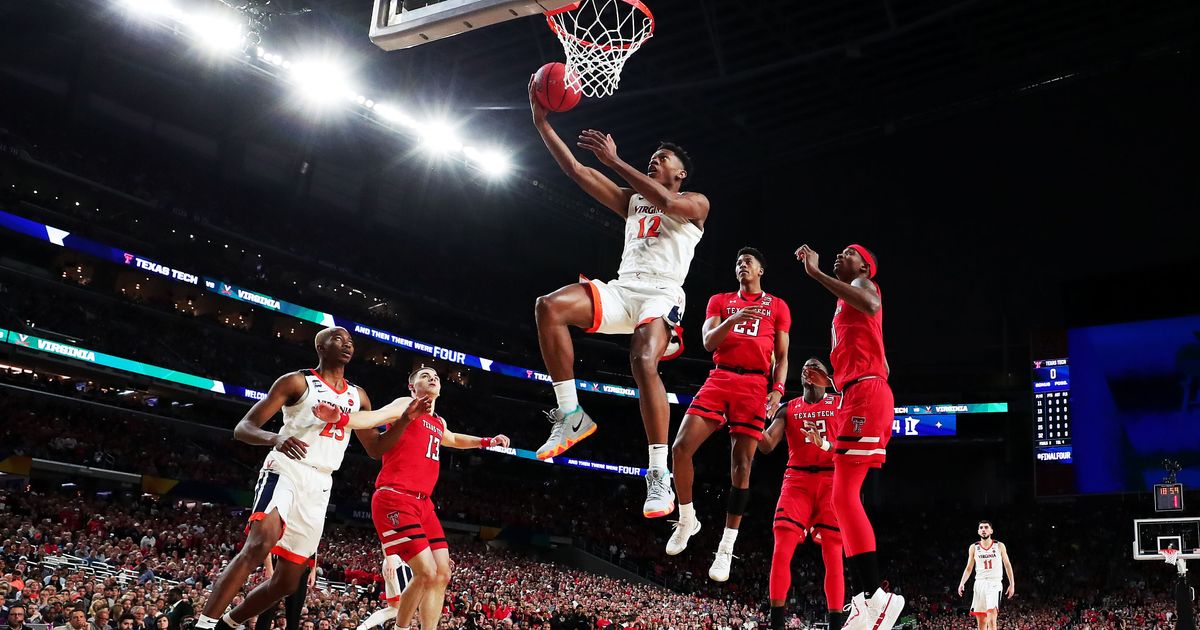 Should easily break through the defense of the opposing team.
Should easily break through the defense of the opposing team.
The center player must be of athletic build.
He plays under the basket and fights for rebounds.
Small forward whose main task is to collect points.
Heavy forward. His job is to control the ball.
The room must have the following
dimensions:
Parameters
Distances
Ceiling height
7 meters
Field size
28 by 15 m.
Shield area
180 by 105 cm. second zone
4.9 m.
Three-point line
6.25 m.
Ring
5 cm from the backboard
Basketball court markings must
comply with the following standards:
Boundary lines. The dimensions of the field plotted along the
perimeter are determined. Facial - those that are behind the rings. Lateral - on
sides.
Central. Divides the field into two equal zones.
Central. This is a circle located in the middle of the field, its diameter is 3.6 m.
It is in this place that the ball is played.![]()
Lines of 3 points. These are closed flat curves located on both sides
under the shields. Their length is 2.99 m.
Penalty line. Located directly in front of the shields.
What should be the ball?
Classic basketball, orange,
spherical shape with black stitching, must meet
the following requirements:
• For men, the sports equipment must average 76-78 cm in
circumference and weigh between 560 and 650 grams.
• For women, basketball size 72 to 74 cm in circumference
and weight 510 to 570 grams.
team and substitutes.
Each team consists of 5 main and 5-7 (in major tournaments)
permanent substitutes, who can only enter the game after
stoppage of the game and the referee's whistle.
If the team in possession of the ball is entitled to a substitution at every stoppage
of the game, then the team not in possession of the ball is entitled to a substitution0443 with the ball, makes a substitution.
game time.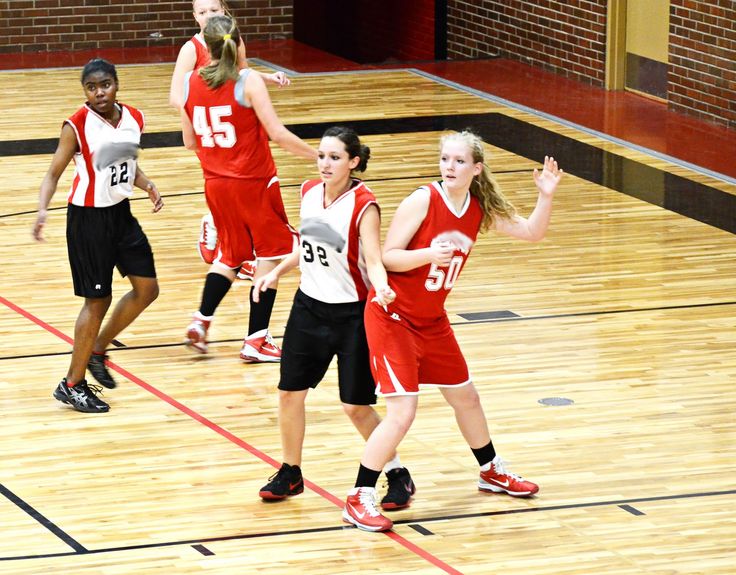
In all classes, basketball matches
last 2 halves of 20 minutes of pure time
. The break between halves of
is 10 minutes. If at the end of the
match time the teams
scored the same number of
points, then an additional
time (5 minutes) is given to determine the
winner.
timeout.
Each team is entitled to 2 time-outs in each half and 1 time-out
in extra time. Coaches usually use a timeout to
to give players tactical guidance and make substitutions.
the beginning of the game.
The game begins with referee
in the center of the court throwing the ball up between 2 players, each of whom
tries to return the ball to his team.
The remaining players of the team are outside the
center circle or in the front zone.
movement rules.
According to this rule, the player who received the ball has the right to make
only 2 steps (more precisely, 2 contacts with the floor). Touching the floor at moment
receiving the ball (also catching the ball on the spot) counts as 1st contact.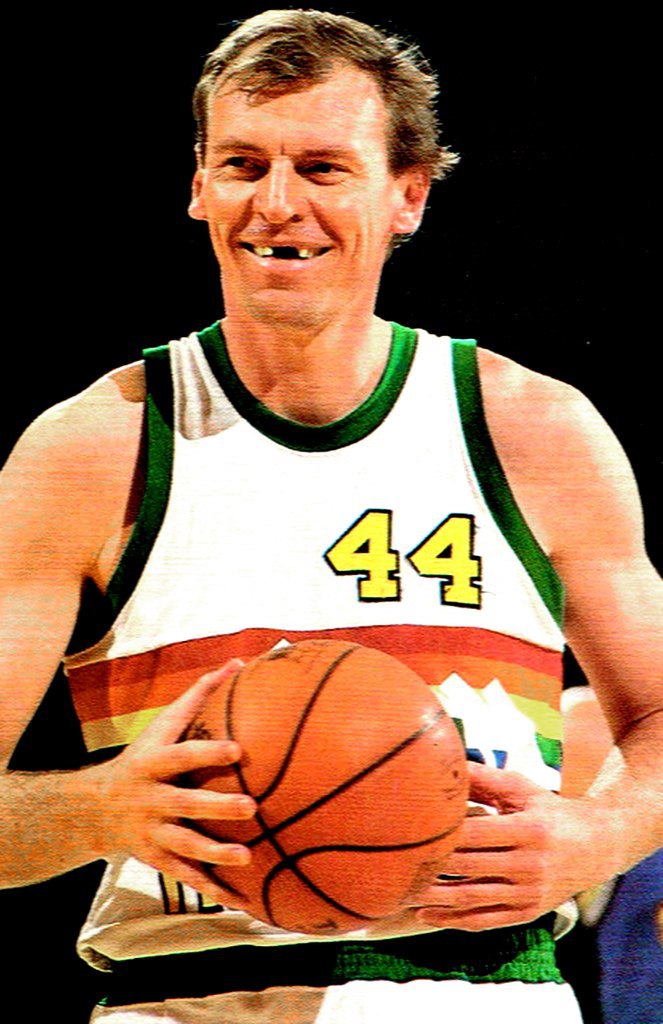
Jumping from a standing position with the ball in hand is a violation of movement rule
. Especially often this rule is violated during
runs, at the beginning and at the end of dribbling.
dribbling.
An athlete may only dribble once at a given time.
As soon as the athlete touches the ball with both hands or takes it
with one or the other hand, the dribbling ends. If the athlete again
continues to dribble, then this is considered a violation of the rules (double dribbling). The ball is passed to the opposing team, who put it into play from behind the touchline.
stopping ball.
A stopping ball is such a game situation in which 1 or 2 players of each team are in contact with the
ball and the ball
is taken out of the game. In this case, the game continues with a controversial
throw-in.
ball out of play.
If the ball or the ball carrier touches the boundary lines of the court or
the floor, object or person out of the court, the referee gives the command
out of play.
In the event that the offside position is difficult to determine, i.e. if both
touch judges have different opinions or if the judges are not able to determine which team
caused the offside
, the game continues with a controversial face-off.
throw-in.
After the game has been stopped in case of offside or technical errors
(violation of the movement rule, double dribbling, violation of rule 3
sec, etc.), the ball is put into play by a throw-in from the touchline. In
a successful throw into the basket results in a throw-in due to a face
lines.
ratings.
Throwing the ball into the basket is counted if the ball falls through the
ring and net from top to bottom. For each successful shot made in
during the game, a shot from an average or close distance (closer than
three-point line), the team receives 2 points. For a successful throw from behind the
three-point line (from a distance of more than 6 meters 75 cm (7. 24m in the NBA)),
24m in the NBA)),
the team receives 3 points, for each successful free throw - 1 point.
foul rule.
One of the most important rules of basketball is the foul rule (translated from
English - "error"). There are personal and technical fouls.
Personal fouls include any intentional touching of an opponent
(holding, pushing, hitting, blocking with hands and feet, etc.). In cases like
the ball is passed to the opponent for a throw-in. After the 11th foul in
half-times, a foul on an opponent's missed shot is punishable by 2,
free throws.
In addition, all personal comments are recorded in the athlete's personal card
. If at the same time 2 players of the team receive a warning, then
the opponent is entitled to 2 free throws. In most cases, the
free throw is performed by the player against whom the rules were
violated.
Players receive a mutual warning in case of simultaneous violation of
rules in relation to each other. In this case, the controversial
In this case, the controversial
face-off takes place. Each player who has received 5 personal or technical
remarks must leave the court. In case of gross and intentional
violations of the rules, the athlete may be disqualified. But in that and at
otherwise the team is entitled to a substitution. Beginning in 1976, offensive fouls
were penalized especially severely when shooting at the basket. If the ball
misses the basket due to a foul, the attacker is entitled to 2 free throws.
If the ball misses the basket on the 1st or 2nd free throw
, the attacker is entitled to 1 more free throw (3 in total).
If, despite the foul, the player shoots the ball into the basket, then this
shot is valid and the player receives an additional 1
free throw.
A technical foul is called for unsportsmanlike conduct by a player
and is punishable by 2 free throws by any player on the opposing team
.
A player who receives 5 personal and/or technical fouls (or 6
fouls in the NBA) or 2 unsportsmanlike fouls in a match must leave the
playing court and may not take part in the match (but he is allowed to remain on the bench if
is doing so) . Player
Player
who received 2 technical warnings or disqualified
foul, ejected and must leave match venue
(player not allowed to remain on the bench).
time rules.
Some of the rules of time are extremely important. 24 seconds after the
throw-in, the attack must be completed by throwing
into the opponent's basket (24 second rule). The 3 second rule states that an attacker cannot be in the opponent's free throw area for more than 3 seconds. For the
throw-in and for the free throw, the player is allotted 5
sec. If the time rules are violated, the ball is given to the opponent for a
throw-in.
The 8 second rule implies that the attacking team must, after
a throw-in administered in its half of the court, no longer than
after 8 seconds bring the ball to the opponent's half, after which the attacking team
cannot return the ball to their own half.
judges on the court and
referee board.
Basketball matches are officiated by referees.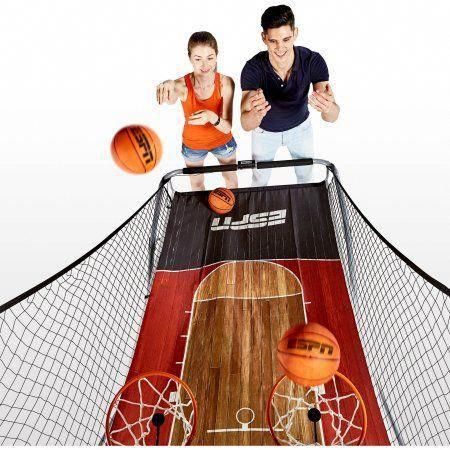 The brigade consists of
The brigade consists of
experienced people with a clear knowledge of the rules of refereeing and having
years of experience. Judges are guided not only by the postulates of
prescribed rules. The referee is obliged to use common sense in
assessing the situation, taking into account the mood and attitude towards the game by the teams. Not
is correct to judge professionals and beginners equally. Newcomers to the game
often make many technical mistakes. Only fixing all
such errors will greatly slow down the whole game. Fundamental principles in
adjudication of rule violations are the basis of construction
holistic game.
The referee must not pause the game unless clearly necessary. Any
aggression and rudeness on the court should be stopped immediately, but
it is not worth punishing a player with a foul for unintentional contact, especially if it does not give any advantage in a particular game situation. The integrity and direct course of the
game depend on the actions and skills of the referee.
The composition of the refereeing team serving the basketball match at the professional level
must include:
Chief Judge and Court Judges.
Two or three referees serve the game to fix errors on the court.
have fairly broad powers. The chief referee makes significant decisions
on the conformity of equipment, equipment, uniforms of players
with the requirements of the rules. In case of serious violations, the Chief Referee may
count the defeat. 20 minutes before the start of the match, the referees begin their
duties. During the match, the referees clearly adhere to the
rules. The decisions of colleagues are not questioned. Game Maintenance
the judges on the court stop at the sound of the siren.
Secretary and his assistant.
The Secretary is responsible for the correct keeping of the score sheet. Through it,
coaches submit applications for participation in the game, containing the data of the players.
The maximum number of players per team cannot exceed 12
(5 main and 7 substitutes). Fixing the game score,
Fixing the game score,
interaction with the teams if a substitution is necessary or
timeout, these are the main duties of the Secretary.
The secretary can only refer to the referee in a dead ball situation.
Control over the number of fouls is also assigned to the Secretary. He brings
this information to the judges and teams.
Timekeeper
A timekeeper in basketball must know the referees' gestures well and know the
rules of the game. He is obliged to turn on and stop time on the scoreboard
in a timely manner, guided by the gestures of the referees (whistle), as well as independently
making a decision when putting the ball into play, declared a timeout,
breaks, dropped or free throws. In the last quarter with 2
minutes before the end of playing time, the Timekeeper stops his
count after each effective throw.
Shot clock operator.
The main function of the shot clock operator is to enforce the
24 second time rule. It turns on the timer every time the
It turns on the timer every time the
team takes possession of the ball and turns it off when the ball leaves the
basketball court. The timer is reset after successfully
completed attack or loss of ball control by the team. Timekeeper
is required to reset the possession time to 14 seconds in a situation where a foul is committed on
by the team in possession of the ball or the ball is taken by the attacking team
after an unsuccessful attempt to hit the ring. In this
case, the ball must hit the ring itself, and the stopwatch should have any number
less than fourteen seconds.
The basic gestures of a basketball referee can be divided into
groups in order of importance to the player:
returned
to the backcourt
Swing
movement
from bottom to top
outstretched
hand with 3 fingers
- 3
seconds
Show 5 fingers
- 3
seconds
904 3 984 Finger touch
shoulder - 24 seconds
Official referee gestures in basketball related to types of fouls
Fouls are punished for an unauthorized act by a player
in relation to another individually, as opposed to violations.
Intercept
wrists at the bottom of
- delay
Capture with palm
and movement
forward delay
with hands
both hands on
hips Blocking (in
protection) or
incorrect
barriers (in
attacks)
Highlights or
Pilings or 9044 off-ball player
Hitting
wrist wrong
use
hands
Punching
open
palm collision
ball carrier
Fingers of one hand
clenched into
indication of
floor - foul not in
in the process of
throw
Imitation
contact with the head
- hit
on the head
Official basketball referee gestures, substitutions
and time-outs
Crossed
forearms 9044 with the front of the chest
outstretched hand
forward
wave towards oneself an invitation
to the platform
palm and
index finger
form the letter
T requested
time-out
Hands to the sides
with clenched
fists media time-out
Official referee gestures in basketball, scoring gestures
Raised hand
one finger
raise hand
move down 1 point
Raised hand
two fingers
raise hand
move down 2 points
Raised hand three fingers
(
shot attempt) or
both hands raised
with three fingers
(successful throw
) - 3 points
Official basketball referee gestures, informative gestures
Single 9
direction
of throw-in
and/or throw-out
Uplifted
thumbs
of both hands
followed by
indication
of direction
situation of a dropped ball
or throw
digits
from 1 to 5 - from
No.
